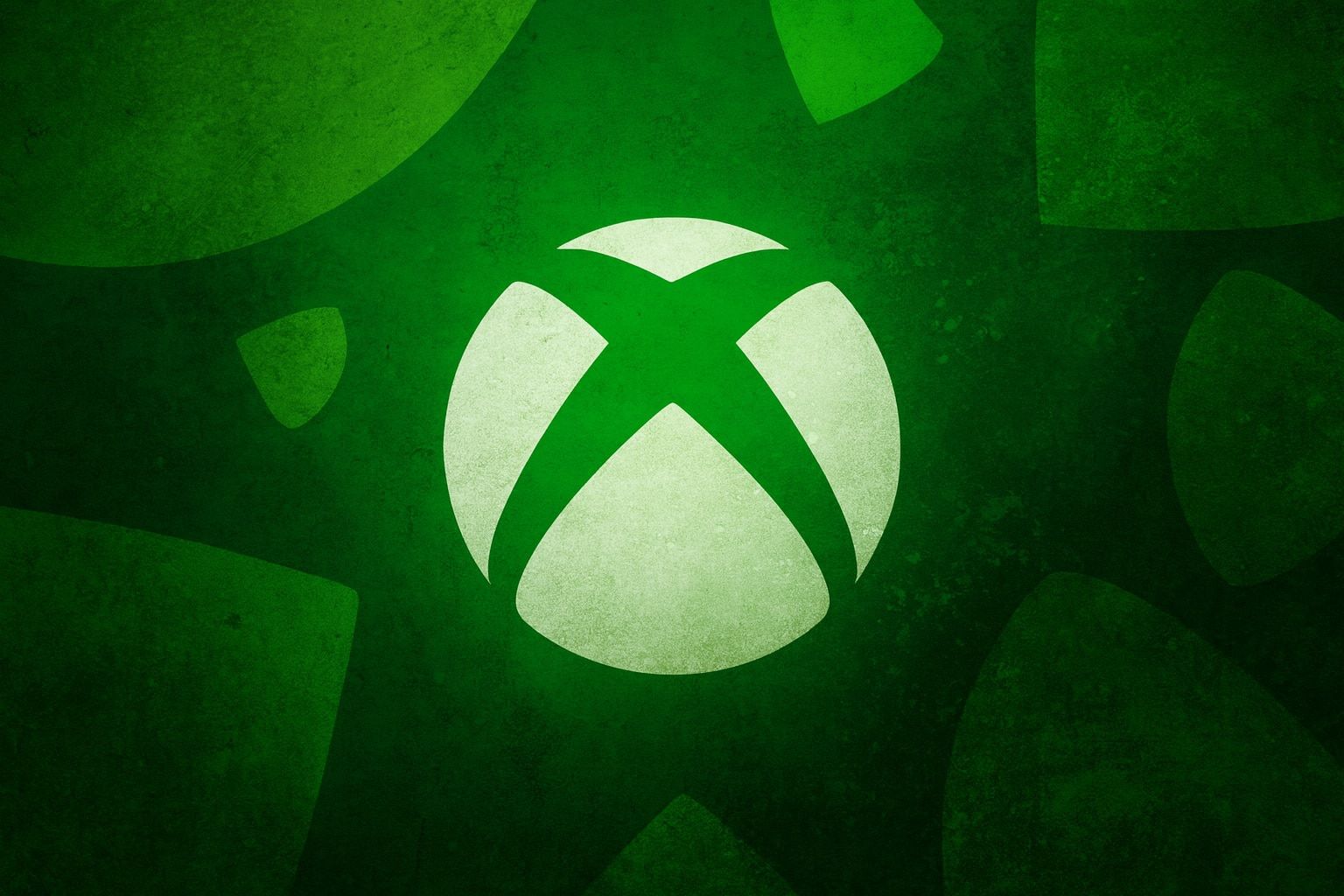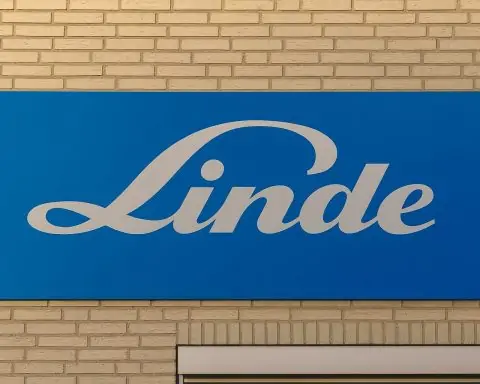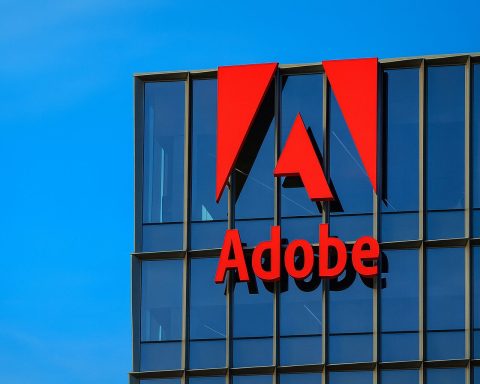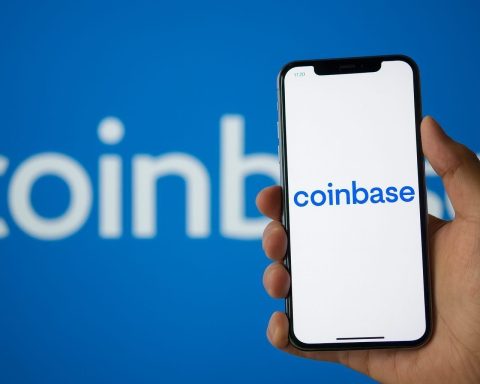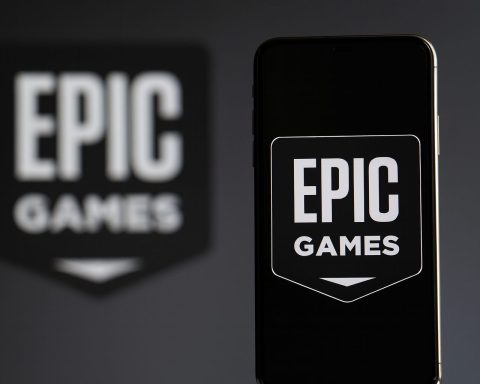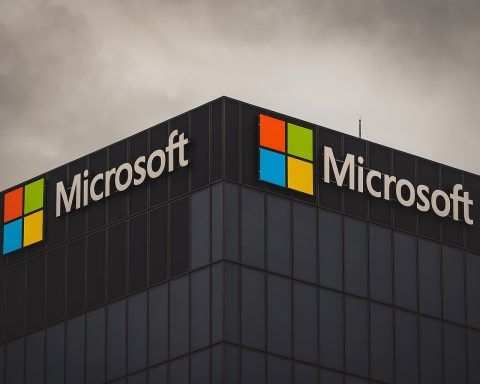- Xbox goes high-end: Microsoft’s next Xbox is being designed as a “very premium, very high-end curated experience,” according to Xbox president Sarah Bond [1]. The company is positioning the new console more like a top-tier gaming PC than a traditional console.
- PC at its core: The next-gen Xbox will run full Windows under the hood, allowing it to support multiple game storefronts (Steam, Epic, Battle.net, etc.) and essentially any PC software [2] [3]. Out of the box it will function like a normal Xbox, but players can exit to a Windows 11 desktop for full PC functionality.
- Plays everything: This hybrid design means the Xbox will reportedly play almost any game – from Xbox classics (all previous generations) to PC titles and even former PlayStation exclusives that have PC ports (like God of War and Spider-Man) [4] [5]. World of Warcraft and other Battle.net games are expected to run on it as well [6].
- No Xbox Live paywall: Microsoft is said to be dropping the multiplayer subscription requirement on the new Xbox. Since it’s essentially a PC, online play won’t be gated behind Xbox Live Gold; charging for multiplayer would only drive gamers to Steam’s free online services [7]. This move would end the long-running paywall for console online gaming on Xbox.
- Cutting-edge AMD tech: The console will use a custom AMD “APU” (combining CPU & GPU) co-designed with AMD. One insider claims it’s codenamed “Magnus” and will be the most powerful Xbox hardware yet [8]. Microsoft has renewed its multi-year partnership with AMD to develop custom chips for this device [9] [10].
- Premium price tag: All signs point to a hefty price. Bond’s comments and Microsoft’s recent hardware reveal – the $999 ROG Ally X handheld PC – suggest the next Xbox could cost on the order of $800–$1200 [11] [12]. That would make it by far the priciest Xbox ever (today’s Series X is $649 after recent hikes). Microsoft argues it will still be cheaper than an equivalent gaming PC, but it may launch at a higher price than Sony’s expected PlayStation 6 [13] [14].
- Release and strategy: Microsoft confirms it is “actively investing in our future first-party consoles”, with insiders pointing to a 2027–2028 launch for the new Xbox [15] [16]. Unlike Sony’s mid-gen PS5 Pro upgrade, Microsoft isn’t doing a “Series X Pro” – it’s all-in on this next-gen hybrid. Executives hint this is a long-term play to put “Xbox everywhere” and blur the line between console and PC gaming.
- Market impact: Investors appear optimistic. Microsoft’s stock (MSFT) has climbed roughly 23% this year (around $519 in early Oct 2025) [17], buoyed by strength in cloud/AI and the Xbox plan. Analysts rate MSFT a “Buy” with price targets ~$617–$631 (20% upside) [18]. Microsoft’s hardware partners are benefiting too – AMD (custom Xbox chips) has seen its stock nearly double on the year amid booming demand [19]. However, some gamers are wary: many have balked at recent price hikes and say if consoles cost $1000 they might as well just build a PC [20].
A Console- PC Hybrid That Plays (Almost) Anything
Microsoft’s upcoming Xbox is shaping up to be unlike any console before it. Reports indicate the device will essentially be a gaming PC in console form, running a full version of Windows 11 with an Xbox-oriented interface on top [21]. In practice, that means players can boot it up like a normal Xbox – with the usual dashboard and controller-friendly menus – or switch to a desktop mode to install and run software just like a PC. According to Windows Central’s Jez Corden, the Xbox team has been integrating PC capabilities so that “if you choose, you can remain fully inside the Xbox ecosystem… [or] exit out to Windows” for games not traditionally available on console [22].
Crucially, this PC-based Xbox won’t be locked to Microsoft’s store. Gamers will be free to install Steam, Epic Games Store, Blizzard’s Battle.net, Riot Games, or any other launcher they want [23]. In other words, the next Xbox could natively run games from rival ecosystems. Players could download Steam and log into their library, playing PC titles that were once off-limits to consoles. This includes major former PlayStation exclusives that have PC ports – for instance, Sony’s God of War, Ghost of Tsushima, Spider-Man, and other hits available on Steam/Epic would all technically be playable on this Xbox [24]. As Corden notes, “You will be able to run PlayStation’s PC titles like God of War… and Spider-Man on the next Xbox, purchased via Steam or Epic” [25]. The same goes for popular PC-centric games: strategy and MMO titles, modded games, or anything not in the Xbox store today. Even Blizzard’s World of Warcraft – a game that has never come to consoles – could be played via the Battle.net client on an Xbox for the first time [26]. In effect, Microsoft is promising one box to play almost any game, no matter what platform it originally launched on.
Despite this openness, Microsoft insists the new console will still feel console-like for mainstream users. The default experience is expected to be a simplified “living room” interface (the so-called Xbox Full Screen Experience) that resembles today’s Xbox dashboard [27]. Casual players need not ever see the Windows desktop if they don’t want to. But power users and PC-savvy gamers will have the option to minimize the Xbox interface and tinker with a Windows 11 desktop, giving them full freedom. They could install mods, use a web browser, run non-gaming apps, or even do work on the machine. As one Reddit commentator joked, you might even run Excel or Teams on your Xbox – essentially it’s a gaming PC that sits in your entertainment center [28] [29].
Backward compatibility is another big promise. Thanks to a new custom AMD processor, this next-gen Xbox will reportedly support every previous generation of Xbox games natively [30]. That means your entire library – original Xbox, Xbox 360, Xbox One, and Series X|S titles – should all run on the new machine [31]. Microsoft has already built extensive backward compatibility into the Xbox One and Series X|S, and it appears committed to carrying that forward. In fact, the Windows Central report claims “all the OG Xbox back-compatible games, all the Xbox 360, all the Xbox One, and all current/future Series X|S games” will work on the new platform, launching seamlessly from your library [32]. If true, this would give Microsoft a huge selling point: one console for every Xbox game ever – on top of all the PC titles it can run. (By contrast, Sony’s PlayStation 5 only plays PS4/PS5 games natively, with older titles accessible mainly via cloud streaming.) This all-in-one approach underscores Microsoft’s strategy of unifying ecosystems.
No More Gold: Multiplayer Goes Free
One immediate implication of the Xbox becoming a Windows-based device is a shake-up of Microsoft’s online service model. On PC, gamers expect to play online for free – there’s no equivalent of Xbox Live Gold or PlayStation Plus required for multiplayer on Steam or Battle.net. Recognizing this, Microsoft is reportedly removing the paywall for online multiplayer on the new Xbox [33]. Currently, Xbox console owners must subscribe (via Game Pass Ultimate or the now-retired Gold) to play most games online. That requirement is expected to be dropped for the next-gen machine. “It wouldn’t make a lick of sense for a ‘PC’ to have paid multiplayer,” Windows Central’s report notes, and doing so would just drive players to use free alternatives like Steam [34].
If Microsoft follows through, it means popular free-to-play titles (e.g. Fortnite, Roblox) and even big franchises like Call of Duty or FIFA could be played online on the new Xbox without any subscription. This would be a consumer-friendly move and a competitive response to years of criticism about console multiplayer fees. It’s worth noting Microsoft already took a step in this direction by making free-to-play games exempt from Gold on Xbox One/Series S|X. The next Xbox could extend free online play to all games, essentially treating the console as just another PC on the network.
However, this raises questions about the future of Xbox Game Pass tiers. Currently, “Xbox Game Pass Ultimate” bundles online play with a library subscription, while a cheaper “PC Game Pass” exists separately for Windows users. If the console and PC ecosystems merge, Microsoft may need to consolidate its Game Pass offerings [35] [36]. We might see a new unified plan, or a rebranding of PC Game Pass, so that Xbox owners aren’t confused about which subscription to use on a PC-like console. Microsoft hasn’t announced details yet, but it’s one area to watch. Regardless, dropping the multiplayer fee would remove a major barrier for console gamers and could attract a broader audience to the Xbox platform.
Power Meets Price: High-End Hardware at a Cost
Behind this ambitious hybrid console is some serious silicon. Microsoft has reconfirmed its partnership with AMD to co-engineer custom chips for future Xbox devices [37]. The next Xbox is expected to pack a new AMD system-on-chip that combines Zen-series CPU cores with RDNA graphics – essentially a PC processor and GPU in one (often called an APU). In fact, one industry insider (the YouTuber Moore’s Law Is Dead) claims Microsoft’s next-gen APU is codenamed “AMD Magnus” and could make the new Xbox “the most powerful piece of hardware yet” from the company [38]. While exact specs aren’t known, this suggests a major leap in performance targeting high-end 4K (and even 8K) gaming, advanced ray tracing, frame generation via AI, and the ability to run heavier PC workloads. Microsoft’s CEO Satya Nadella hinted at this philosophy, stating “We built the console because we wanted to build a better PC” – signaling the company’s goal to bring PC-level power to the console form factor [39] [40].
All that tech won’t come cheap. Microsoft is telegraphing that the next Xbox will carry a “premium” price tag. Sarah Bond explicitly warned gamers to “start saving” because the device will be “very high-end” [41]. Recent history gives us clues: Microsoft’s first Xbox handheld (the ROG Ally Xbox Edition, made with Asus) launched in October at $999.99 for the high-end model [42]. That is the steepest price ever for an Xbox-branded device, and it suggests the company is comfortable charging four figures for flagship hardware. TS2.Tech noted the Ally X is now the “most expensive ‘Xbox’ device ever,” and a bit of a “sticker shock” for fans used to consoles under $500 [43] [44]. If a portable Xbox costs $999, many observers are wondering what the full next-gen console will cost [45].
Early rumors span a range, but it’s likely to be significantly pricier than the $499 Xbox Series X. Some reports, based on insider leaks, suggest the next Xbox could land around $800 to $1200 USD if it indeed uses cutting-edge components like the Magnus chip [46]. For comparison, Sony’s new mid-cycle PS5 Pro just launched at $699, and even that caused debate over pricing. Microsoft’s device, being a generational leap, could easily top that. In fact, analysts expect it to cost more than Sony’s future PlayStation 6 (whenever that arrives) given the PC-like hardware inside [47]. Jez Corden reckons it “will be more expensive than the PlayStation 6, but could remain the most cost-effective curated onboarding to PC gaming” for what it offers [48] [49]. The idea is that, although $1000 is a lot of money, a similarly specced gaming PC might cost even more. Microsoft can leverage economies of scale, bulk component deals, and the fact that it doesn’t need to buy a Windows license for its own device, to keep the price relatively lower than a DIY PC build [50]. Still, there’s no denying this will be a luxury console by traditional standards. It marks a strategic shift: instead of competing to be the cheapest box under the TV, Microsoft appears ready to sell a powerhouse and bank on enthusiasts and Xbox loyalists (along with Game Pass subscribers) seeing the value.
It’s worth noting that Microsoft has been steadily raising prices on its gaming products in 2023–2025, perhaps to prepare the market. In October, the Xbox Series X console’s MSRP jumped to $649.99 (from $499) in the U.S., and the Series S to $399 [51]. The Xbox Game Pass Ultimate subscription also spiked 50%, from $19.99 to $29.99 per month, drawing criticism [52]. These moves were met with some backlash, but they also signal that the era of $500 high-end consoles might be over. Even Sony has inched up prices; the PS5 Pro’s $699 tag (and even higher in some regions) means both console makers are testing higher pricing tiers. Microsoft seems poised to take it a step further into the ~$1000 range with the next Xbox, effectively overlapping with PC pricing. The company is betting that consumers will pay a premium for a device that unifies console convenience with PC versatility. As Bond put it, “you’re starting to see some of the thinking we have in [the handheld];” that philosophy of premium hardware is carrying into the console space [53] [54].
Fan Reactions and Market Outlook
News of Microsoft’s ambitious Xbox plans has drawn mixed reactions from the gaming community. On one hand, tech enthusiasts are intrigued – a console that can do it all, finally bridging the console/PC divide, is a bit of a dream machine. On the other hand, longtime Xbox fans and budget-conscious gamers are nervous about what this means for cost and the traditional console experience. When Microsoft unveiled the $999 Xbox Ally X handheld, the reaction included plenty of sticker shock. Many gamers took to social media to argue that at those prices, “you’re better off taking your $1200 and building a PC instead” [55]. The whole selling point of consoles, they argued, is affordability and ease of use – if that disappears, some fear Xbox might “be dead” to its core audience [56]. We’ve already seen frustration over the Series X price hike; even a former Xbox executive, Mike Ybarra, publicly criticized the $649 console price, saying it’s driven by profit motives rather than costs [57]. That sentiment captures a challenge for Microsoft: it must convince gamers that a supercharged $1000 Xbox is worth it, when historically $299–$499 was the sweet spot for consoles.
Microsoft’s counter-argument leans on value and ecosystem. If this device effectively replaces a gaming PC, a console, and maybe even a streaming box or office PC, they believe there’s a segment of consumers that will see it as a good deal. The company is also likely to emphasize how Game Pass and its broader platform make gaming cheaper in other ways (hundreds of games for a flat fee, cloud streaming on any device, etc.). By making the next Xbox compatible with everything, Microsoft could attract PC gamers who never would have bought an Xbox before – a new audience that might justify the experiment. In the words of CEO Nadella, Xbox is aiming to be “everywhere, on every platform,” blurring the line between consoles, PCs, and cloud gaming [58]. This grand vision could pay off by expanding the Xbox user base beyond the traditional console market.
Meanwhile, investors and industry analysts are watching closely. Thus far, Microsoft’s stock has been on a tear in 2025, thanks largely to its successes in cloud computing and AI, but also buoyed by the resilience of its gaming division. MSFT shares hit all-time highs above $500, and were trading around $519 in early October [59]. Analysts have a consensus “Buy” rating on the stock with price targets in the $600+ range [60], reflecting optimism that Microsoft’s broader strategy – of which Xbox is a part – will drive continued growth. The next-gen Xbox itself could become another pillar of the Windows ecosystem, driving revenue through hardware sales, Game Pass subscriptions, and storefront commissions (remember, if it runs Steam and others, Microsoft will still want you buying through its Xbox/Windows store when possible, where it only takes a 12% cut vs. Valve’s 30% [61]). Additionally, Microsoft’s bold hardware plans are a boon for partners like AMD. AMD not only secured the contract for the new Xbox chips but is also riding the AI wave, leading its stock (AMD) to roughly double in value in 2025 [62]. If the new console uses high-end AMD tech, that could mean larger orders and a nice revenue stream for AMD (and likewise, Nvidia benefits indirectly as PC gaming gets a boost). In short, the tech industry sees Microsoft’s high-end console as part of a bigger trend of convergence between PC and console, and they’re placing bets accordingly.
The timeline for this next-gen Xbox is still a bit down the road – current indications point to 2027 or 2028 for release [63]. That gives Microsoft a few more years to refine the concept and build up an ecosystem (and for component prices to hopefully come down). In the meantime, the Xbox Series X|S will remain Microsoft’s main consoles, and no mid-generation upgrade is planned [64]. Sony, conversely, just released the PS5 Pro and will likely prep a PlayStation 6 in a similar late-decade timeframe. It sets the stage for a very interesting next console war: an ultra-powerful, PC-like Xbox vs. a more traditional PlayStation 6. Microsoft is effectively gambling on a paradigm shift; as one analysis put it, it’s a “risky strategy with a huge potential payoff if executed well.” [65] If the plan succeeds, Microsoft could reinvent what a console means and gain an edge in the long run. If it backfires (say, due to price or execution issues), Microsoft risks ceding the lower end of the market to competitors or losing gamers who just want a simple, affordable console.
For now, Microsoft is sending a clear message: Xbox is not exiting the hardware business – it’s doubling down with its most ambitious console ever [66]. Despite some doom-saying in the community, Xbox leadership remains confident. “Xbox is dead, long live Xbox!” Jez Corden wryly proclaimed, noting how often the brand has been written off only to pivot and persist [67]. This next-gen Xbox is the clearest sign yet of that pivot. By converging the strengths of PCs and consoles, Microsoft aims to create a one-stop gaming powerhouse. We’ll have to wait a couple more years to see it in action – and to find out whether the gaming public will embrace the concept of a $1000 Xbox that can do everything. But one thing’s for sure: if you’re an Xbox fan, it might be wise to start saving up now, as the future of gaming won’t be cheap [68] [69].
Sources: Microsoft/Windows Central [70] [71] [72]; IGN [73] [74]; Polygon [75] [76]; TS2 Tech [77] [78] [79]; GamingBible [80].
References
1. ts2.tech, 2. www.windowscentral.com, 3. www.windowscentral.com, 4. www.windowscentral.com, 5. www.windowscentral.com, 6. www.windowscentral.com, 7. www.windowscentral.com, 8. www.gamingbible.com, 9. ts2.tech, 10. ts2.tech, 11. www.gamingbible.com, 12. ts2.tech, 13. www.windowscentral.com, 14. ts2.tech, 15. ts2.tech, 16. ts2.tech, 17. ts2.tech, 18. ts2.tech, 19. ts2.tech, 20. www.gamingbible.com, 21. www.windowscentral.com, 22. www.windowscentral.com, 23. www.windowscentral.com, 24. www.windowscentral.com, 25. www.windowscentral.com, 26. www.windowscentral.com, 27. www.windowscentral.com, 28. www.reddit.com, 29. www.reddit.com, 30. www.windowscentral.com, 31. www.windowscentral.com, 32. www.windowscentral.com, 33. www.windowscentral.com, 34. www.windowscentral.com, 35. www.windowscentral.com, 36. www.windowscentral.com, 37. ts2.tech, 38. www.gamingbible.com, 39. www.gamesradar.com, 40. www.gamesradar.com, 41. www.gamingbible.com, 42. ts2.tech, 43. ts2.tech, 44. ts2.tech, 45. ts2.tech, 46. www.gamingbible.com, 47. www.windowscentral.com, 48. www.windowscentral.com, 49. www.windowscentral.com, 50. www.windowscentral.com, 51. ts2.tech, 52. ts2.tech, 53. www.gamingbible.com, 54. www.gamingbible.com, 55. www.gamingbible.com, 56. www.gamingbible.com, 57. ts2.tech, 58. www.gamesradar.com, 59. ts2.tech, 60. ts2.tech, 61. www.windowscentral.com, 62. ts2.tech, 63. ts2.tech, 64. ts2.tech, 65. www.windowscentral.com, 66. ts2.tech, 67. www.windowscentral.com, 68. www.gamingbible.com, 69. www.gamingbible.com, 70. www.windowscentral.com, 71. www.windowscentral.com, 72. www.windowscentral.com, 73. www.gamingbible.com, 74. www.gamingbible.com, 75. www.windowscentral.com, 76. www.windowscentral.com, 77. ts2.tech, 78. ts2.tech, 79. ts2.tech, 80. www.gamingbible.com
